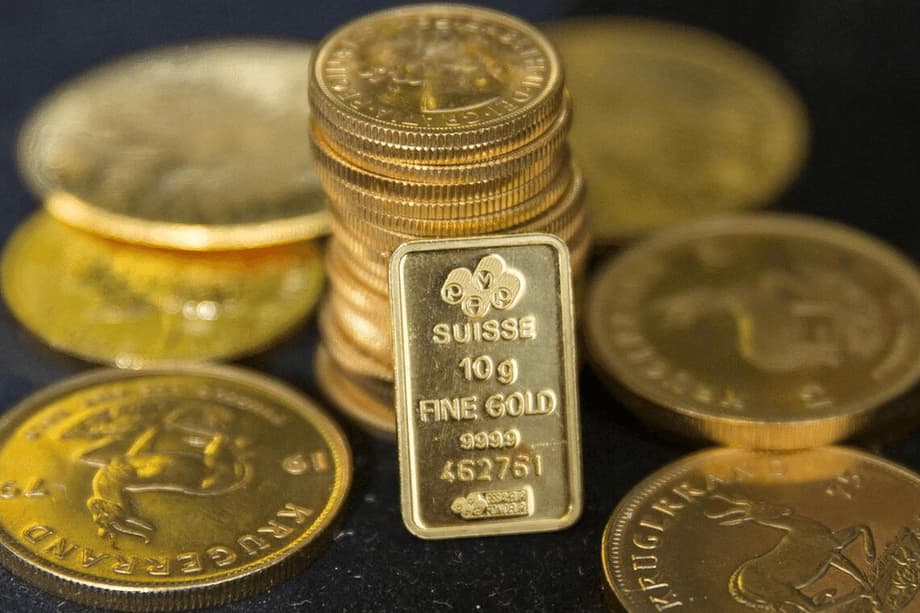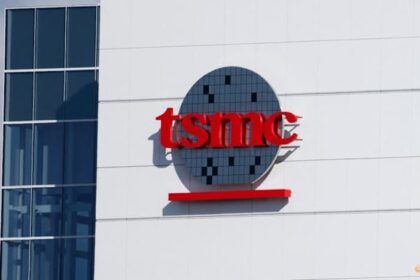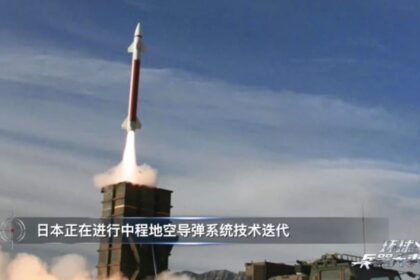Why gold is back in the spotlight
In mid October 2025, gold pierced the 4,000 dollar mark and set a new intraday record near 4,059 dollars an ounce. Silver followed with its own peak above 51 dollars. The move capped a rapid year for precious metals. Gold is up more than 50 percent in 2025 after double digit gains in 2024. Investors rushed into perceived havens as policy and geopolitical shocks piled up. The White House unveiled 100 percent tariffs on goods from China on Oct 10 and fresh export controls on selected software that begin on Nov 1. Beijing has tightened controls of rare earths. Equity markets across Asia stumbled, and volatility returned to currencies and rates.
Macro forces added fuel. A prolonged government shutdown in the United States entered its twelfth day on Oct 12, stalling the release of jobs and inflation data. Markets now expect the Federal Reserve to lower its policy rate by 25 basis points at the Oct 28 to 29 meeting, and to consider another cut in December. Lower interest rates reduce the opportunity cost of holding an asset that does not pay coupons or dividends, which improves the relative appeal of bullion. A weaker or more volatile dollar, combined with a growing desire by central banks to diversify reserves, has further supported strategic demand. At current price levels, jewellery buyers have stepped back, and investment demand has taken the lead.
How Singapore investors are responding
Singapore has mirrored the global turn toward investment gold. Data from the World Gold Council show that investors in the city state bought 2.5 tonnes of bars and coins in the first quarter of 2025, the highest since tracking began in 2010. Demand stayed elevated in the second quarter at 2.2 tonnes, up 37 percent from a year earlier. Jewellery buying went the other way. Purchases fell 8 percent to 1.5 tonnes in the second quarter as record prices curbed buyers who historically drive demand during festive seasons and life events.
Banks and dealers report brisk activity. UOB says that between January and September, clients bought on average 65 percent more gold each month through the bank’s gold savings account than they did per month in 2024. Over the same period, physical bar and coin purchases rose about 42 percent. Interest in gold certificates has climbed as customers prefer custody with a trusted institution rather than holding bars at home or in private storage.
Kelvin Ng, head of group global markets at UOB, described the mood among retail clients.
“Demand in Singapore for tangible gold has grown amid market uncertainty.”
Bars, coins and new bullion brands
New product launches have followed the surge in interest. The Singapore Mint introduced Lion Bullion, a line of investment grade bars with a lion motif, produced with a Swiss refinery partner and minted to high purity. Bars range from 1 gram to 1 kilogram. They are exempt from goods and services tax under Singapore’s rules for investment grade precious metals. Each piece is sealed, serialized and registered to speed up authenticity checks. Buyers can collect, arrange delivery or store in the Mint’s vaults. Purchases of at least 10 ounces qualify for free vaulted storage until June 30, 2026. A buyback service with transparent pricing is available, and customers can execute transactions through an online platform for faster settlement.
ETFs and listed plays
Singapore investors have also added paper gold through exchange traded funds and equities. The SPDR Gold Shares ETF, which is listed on the Singapore Exchange and in the United States, attracted about 309 million Singapore dollars in net inflows by mid June, the most of any Singapore listed ETF in the year to that date. Other gold backed funds, including iShares Gold Trust, abrdn Physical Gold Shares ETF and GraniteShares Gold Trust, have seen renewed interest on US exchanges that locals can access through their brokers. Some investors have sought leverage to the metal through equities. Shares of CNMC Goldmine, listed in Singapore, have climbed more than 440 percent this year. Meanwhile, Zijin Gold International in Hong Kong more than doubled from its late September listing price to mid October. Equity exposure comes with different risks because mining companies face cost, geology and management variables. Price action can diverge from spot bullion, so investors evaluate these shares as equities rather than a proxy for the commodity.
Heng Koon How, head of markets strategy at UOB, highlighted the breadth of the bid for gold across instruments in an early October research note.
“The recent rally in gold prices has been driven in part by a surge in retail demand for gold related investment products, on top of physical gold and gold certificates.”
This pattern fits with a global shift from jewellery toward investment products at record price levels.
Global forces lifting prices
Behind Singapore’s buying spree is a powerful global setup. The World Gold Council estimates that total gold demand reached 1,249 tonnes in the second quarter of 2025, a 3 percent increase from a year earlier, even as jewellery consumption fell. Exchange traded funds swung back to inflows, adding 170.5 tonnes in the quarter and 397 tonnes in the first half, the strongest first half since 2020. Central banks continue to build reserves after buying more than 1,000 tonnes in 2024 for the third year in a row. In the first half of 2025, official sector purchases reached about 410 tonnes. These institutions cite diversification, liquidity and the metal’s role as a hedge against currency and geopolitical risk.
Rate expectations add a cyclical prop. Futures pricing now suggests the US Federal Reserve is likely to start easing, which would lower real yields that tend to compete with gold for investor attention. Trade policy is another swing factor. New tariff plans and export controls from Washington, combined with cross border restrictions by Beijing, have worsened worries about global supply chains and growth. Anxiety over the dollar’s outlook has spilled into other precious metals. Silver, platinum and palladium have also surged this year as investors rotate part of their cash and bond holdings into hard assets.
Shaokai Fan, the World Gold Council’s head of Asia Pacific (ex China) and global head of central banks, expects these forces to keep investment demand elevated.
“Geopolitical tensions, market volatility and macroeconomic uncertainty will continue to drive investment demand in gold.”
Forecasts illustrate a wide distribution of possible outcomes. Analysts at J.P. Morgan see prices averaging around 3,675 dollars an ounce by the fourth quarter of 2025 and approaching 4,000 dollars by mid 2026, anchored by robust official and investor buying. Carsten Menke, who leads next generation research at Julius Baer, recently lifted his 12 month target to 4,500 dollars, assuming investors keep roughly a fifth to a quarter of portfolios in gold over the coming years. Ed Yardeni, president of Yardeni Research, has turned more bullish still.
“We are now aiming for 5,000 dollars in 2026. If it continues on its current path, it could reach 10,000 dollars before the end of the decade.”
Central bank behavior is a structural pillar. Since 2022 the official sector has been augmenting reserves at the fastest pace in modern times. Many emerging market reserve managers cite a desire to diversify away from the dollar and to hold assets free of counterparty risk. Some developed market central banks have also topped up. Global official holdings are near 36,000 tonnes. In parallel, investors hold an estimated stack of nearly 50,000 tonnes across bars and coins, ETFs and futures. Those stocks have a high notional value at current prices, which can amplify moves when flows swing one way.
Why Singapore is a regional hub for gold
Policy, infrastructure and geography have combined to position Singapore as a leading Asian hub for buying, storing and trading bullion. Investment grade precious metals are exempt from goods and services tax. The legal system prizes property rights and contract enforcement. Political stability and a pro business regulatory stance add to the appeal for global investors who want certainty around custody. The city also sits at a natural crossroads for supply chains linking refiners, mints, miners and end buyers across Asia and beyond.
That foundation supports a thriving vaulting ecosystem. Le Freeport, sometimes called Asia’s Fort Knox, houses high security storage for bullion and other collectibles. Private vaults such as The Reserve are designed for scale, with capacity cited around 500 tonnes of gold and 10,000 tonnes of silver. Providers report rising interest from wealthy families and institutions this year, including higher orders for storage and stronger bar sales compared with 2024. Banks and the Mint offer domestic storage as well, which helps retail investors who prefer local custody to offshore vaults.
Industry engagement is rising in step with investor attention. Singapore is hosting an Asia focused precious metals conference in late September 2025, bringing together miners, refiners, fund managers and family offices to discuss financing, new projects, reserve management and technology. The agenda underscores the city’s role as a convening point for capital and ideas in gold and silver. Interested institutions can find details on the event website here.
What investors in Singapore are buying and why it matters
Gold buyers in the city state are using a broad toolkit. Each instrument has different costs, risks and liquidity profiles. The mix has shifted toward investment products that behave more like financial assets and away from jewellery that carries heavier fabrication costs.
Physical versus paper gold
Bars and coins give direct exposure to spot prices. They can be pledged as collateral and are widely recognized, but they require careful handling and secure storage. Bank gold savings accounts and gold certificates offer price exposure without taking delivery. Fees are transparent, and the issuer manages the back end logistics. Exchange traded funds provide intraday liquidity on stock exchanges and can be held in brokerage and retirement accounts alongside other assets. Some funds hold allocated bars that match liabilities. Others track prices via derivatives. Futures and contracts for difference can deliver leverage and short term tactics, but losses can exceed the initial outlay if prices move sharply. Investors seldom need leverage to get the diversification benefits of bullion.
Portfolio role and sizing
Gold’s appeal is rooted in its low correlation with stocks and bonds over long horizons. Allocations can dampen drawdowns during shocks, and they can support purchasing power when inflation spikes. Several banks argue that staged buying helps reduce timing risk when prices are rising quickly. Against that backdrop, some strategists, including Julius Baer’s Carsten Menke, assume that a 20 to 25 percent allocation will persist as a global average in coming years. Other wealth managers continue to recommend smaller core allocations blended with cash, bonds and equities for balance. Singapore households that still want jewellery for life events now often split budgets, keeping the heirloom purchase modest while adding a bar, certificate or ETF to the portfolio.
What could cool the rally
Nothing moves in a straight line. A faster US economy with a firmer dollar and higher real yields would weigh on bullion. A ceasefire that holds in key conflict zones or a thaw in US China trade relations could lower the geopolitical risk premium. Persistent ETF outflows would sap momentum. High prices also start to incentivize new mine projects and expansions. If supply picks up, price gains could slow. Markets have absorbed similar cycles before, which is one reason why many investors prefer to treat bullion as a strategic diversifier rather than a speculative bet. The Monetary Authority of Singapore’s gold holdings have stayed steady around 220 tonnes after a small sale early in the year, a reminder that reserve managers adapt as conditions evolve.
Key Points
- Gold set a fresh record near 4,059 dollars an ounce on Oct 13 as safe haven demand accelerated, while silver also reached a new high above 51 dollars.
- Year to date, gold is up more than 50 percent after gaining 27 percent in 2024.
- Singapore bought 2.5 tonnes of bars and coins in Q1 2025, then 2.2 tonnes in Q2, while jewellery demand fell 8 percent to 1.5 tonnes in Q2.
- UOB reports average monthly gold purchases via its gold savings account rose 65 percent versus 2024, with physical purchases up about 42 percent; interest in gold certificates increased.
- SPDR Gold Shares ETF drew about 309 million Singapore dollars in net inflows by mid June; CNMC Goldmine shares surged more than 440 percent, and Zijin Gold International more than doubled after listing.
- Global Q2 2025 gold demand reached 1,249 tonnes, driven by 170.5 tonnes of ETF inflows; central banks bought about 410 tonnes in the first half.
- Markets price a 25 basis point Fed cut at the Oct 28 to 29 meeting and another move in December; a US government shutdown has delayed economic data.
- The Singapore Mint launched the GST exempt Lion Bullion bar range, with options from 1 gram to 1 kilogram and vault storage available.
- Singapore’s secure storage ecosystem, including facilities like Le Freeport and The Reserve, is drawing more assets amid global uncertainty.
- Price outlooks vary: J.P. Morgan sees an average near 3,675 dollars in Q4 2025 and approaches 4,000 dollars by mid 2026; Julius Baer targets 4,500 dollars in 12 months; Ed Yardeni sees 5,000 dollars in 2026 with a path toward 10,000 dollars by 2028.
- Risks to the rally include firmer US growth and real yields, a stronger dollar, easing geopolitical tensions, rising mine supply and ETF outflows.












